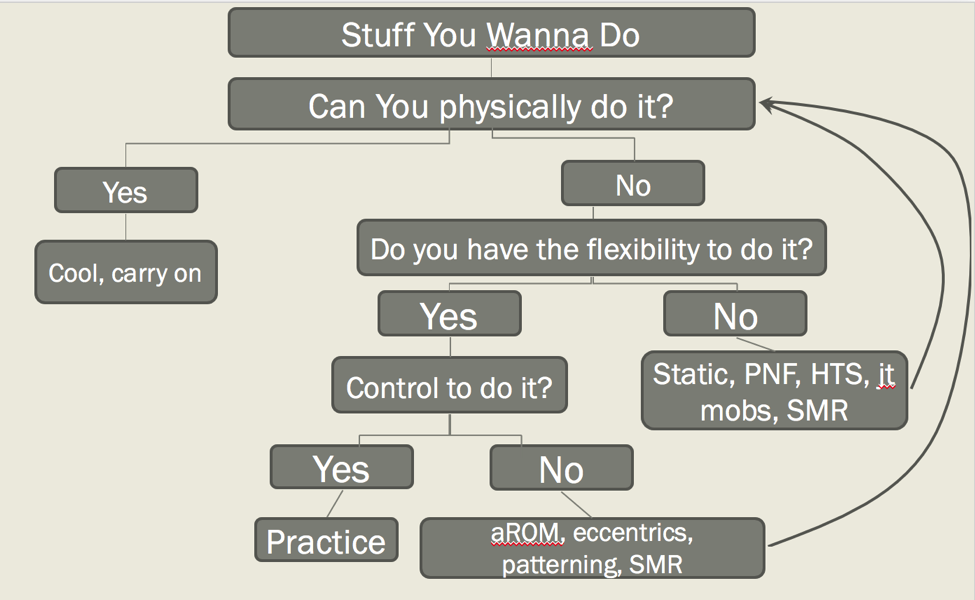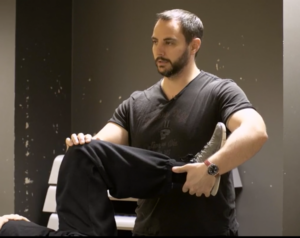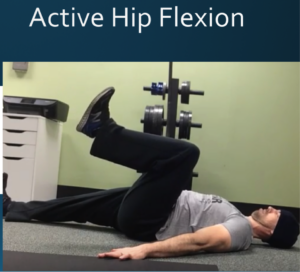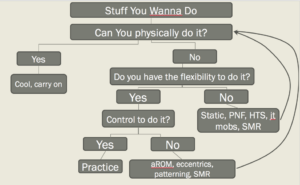
Should You Even Stretch?
Today’s guest post comes from Dean Somerset. In reviewing his outstanding resource, The L2 Fitness Summit Video Series (which is on sale for $50 off this week), I thought Dean did a great job discussing active vs. passive range of motion, and asked if he’d be willing to expand on the topic in a guest post, and he kindly agreed. Check it out! -EC
Mobility training is a hop topic right now. Head over to Instagram and you’ll see incredible feats of flexibility that don’t seem like something humans should be able to do without calling 911 due to some terrible accident having taken place.
While these feats are undoubtedly cool to see, there’s also the big question of “why should you even do that stuff? Is it beneficial to health, longevity, or physical performance? Is it something that helps you achieve a specific goal, or prevent injury or get hot dates for the weekends?”
First, let’s look at what is involved in being flexible and having some solid mobility.
Flexibility is typically defined as the available range of motion available to a joint or specific motion.
Mobility is typically defined as the usable range of motion available to an individual.
Another way to look at it, flexibility is your passive range of motion, whereas mobility is your active range of motion, and each is very important, as is their interplay with one another.
The passive range of motion is the theoretical limit of your available range that you could move through for funky stuff like splits, squats, overhead presses, or other movements you’d want to do on a daily basis in the gym. It can be expanded with some “unlocking” options if it’s restricted by motor control issues like guarding tension, or by prolonged static stretching to adapt the tissues that might impede further mobility, such as the joint capsule, ligaments, fascia, or other tissues.
For these tissues to adapt to static stretching, it typically takes a very long time in the stretch (think 5-30 minutes on a daily basis for months on end), and also works best in younger individuals versus older. Odds are, once your epiphyseal plates at the ends of your bones fuse, expanding your passive range is going to be fairly limited.
Now if you have the passive range of motion, you should be able to use it. The active range of motion should be relatively close to what the passive available range currently is. If you can’t use that range, there’s a problem.
While much of the limits to passive range of motion may be structural, the limits to active range of motion are usually more neural. The efferent division of the nervous system controls motor function, including developing sufficient strength across entire ranges of motion or within portions of that range commonly used.
Coming back to the original question of this post, should you even stretch? That depends on whether you need more passive or active range of motion, and what methods of development are best for improving those characteristics.
If you have enough flexibility to do all of the things you want to do in life, you don’t need to develop more flexibility. Would more be good to have if you needed it? Sure, but at current time, you’re golden.
If you can get enough hip flexion to squat to depth for a powerlifting meet, more range won’t give you more white lights.
If you can’t get to this range of motion needed for the activities you want to do, that’s when stretching could be beneficial. Progress tends to be slow for this, but can happen relatively easily if you’re patient. It may mean watching The Walking Dead or Game of Thrones while holding a stretch, but you can do it.
If you have the range but can’t access it, that’s when active mobility comes into play. A basic approach would be to put the joint into a range of motion it wouldn’t normally be able to get into on its’ own with the help of either external loading or some supportive structure, and then developing muscle tension in that new position.
Creating agonist and antagonist muscle tension in the new position can help develop range-specific strength while also training the motor pattern to create activity in that range that it’s not used to developing, which can help you to access later.
Another option would be to take off the brakes from the system to see if that helps. Some higher threshold core activation exercises seem to help reduce resting neural tone into the distal tissues, and helps expand the available range of motion effectively.
Once you have access to that range in both passive and active capabilities, it’s time to train it. Use big ranges of motion with max contractile ability, then add loading to it to help cement that ability to use through all the challenges you can throw at it.
So this comes back to the original question: Should you even stretch? I have a simple flow chart to explain the basis of this post and give some direction on what you should do.
If you have both the flexibility and control through the range of motion to do what you want to do, you don’t need to stretch.
If you have the flexibility but not the control, you need to do more active controlled tension drills to help access that range of motion. If you don’t even have the range of motion to do the activity you’re looking to do, that’s where things like static stretching, PNF style contractions, high threshold strategies, joint mobilization or self-myofascial release (foam rolling) can come in very handy.
Haphazardly stretching everything for everyone is rarely ever a beneficial way of training, let alone a good use of time for many individuals with whom it may not be recommended. More range of motion is often not necessary, or even attainable in the case of structural restrictions, but if you enjoy stretching and it makes you feel good, that’s reason enough to continue if you like. However, if it’s not giving you any specific benefits, it may be worth choosing any of the other options we went through today and see if they produce more of a benefit to your training.
Along with Dr. Mike Israetel, Dean is the co-creator of the L2 Fitness Summit Video Series, which was released today. I’m in the process of working my way through this new continuing education resource; Dean offers a nice glimpse into some assessment components that go beyond typical movement screens, and Mike’s presentation on hypertrophy mechanisms and strategies was insightful as well. These are some seemingly minimally-related topics, but they did a good job of pulling everything together. It’s on sale for $50 off this week, and definitely worth a look – especially with it being the end of the year and NSCA CEUs being available for the resource. Check it out HERE.







